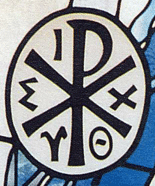Ephraim Radner of Wycliffe College (Toronto, Canada) is a member of the Covenant Design Group
How did the idea of a Covenant arise?
The history of the proposed Covenant goes back over a decade. Here are a few key elements in this history:
- In 1997 the so-called “Virginia Report” of the Inter-Anglican Theological and Doctrinal Commission began a rich process of reflecting on the needs of a growing, diversifying, and changing Anglican Communion. This included analyzing and re-thinking in some cases the current structures and relationships among Anglican churches around the world and generally demonstrating the demand for greater explicitness and deliberation in the way the Communion functions. The Report’s opening theological discussion (2.1) sets out the reality of divine “Covenant” as the fundamental means by which God’s purposes are enacted historically.
- In March 2001, as fractures within the Communion had already begun to appear, Prof. Norman Doe of Cardiff University proposed “covenants” among Anglican churches as a means of furthering the coherent articulation of a common “communion canon law”, based on the existing ius commune of the Communion (the shared fundamental commitments to Communion life already present in the canon law of various Anglican churches around the world – see his “Canon Law and Communion”, available online at the Anglican Communion office).
- In 2004, in response to the disarray within the Communion sparked by the election and consecration of the partnered gay bishop of New Hampshire in the American Episcopal Church the year earlier, the Lambeth Commission on Communion issued what is called the Windsor Report. The Report provided three important spurs to the Covenant proposal. First, it described the communion shared among Anglican churches as one of “covenantal affection” (par. 45), thereby defining the Anglican Communion, theologically, as already structured by covenantal dynamics. Second, the Windsor Report (paragraphs 113-120) actually proposed in a formal way that a Covenant be drafted and adopted, the “case” for which, it said, was “overwhelming”:
“This Commission recommends, therefore, and urges the primates to consider, the adoption by the churches of the Communion of a common Anglican Covenant which would make explicit and forceful the loyalty and bonds of affection which govern the relationships between the churches of the Communion. The Covenant could deal with: the acknowledgement of common identity; the relationships of communion; the commitments of communion; the exercise of autonomy in communion; and the management of communion affairs (including disputes).” (par. 118).
Finally, the Windsor Report provided a “draft” proposal to stir reflection (Appendix Two of the Report).
- The Windsor Report’s recommendation was accepted by the Primates’ Meeting in 2005, and later by the Anglican Consultative Council, and in 2006, the Archbishop of Canterbury, Rowan Williams, followed up on this, first by an open letter to the Communion describing his support of the Covenant idea (“The Challenge and Hope of Being Anglican Today”), and then by his appointment of provincial nominees to a Covenant Design Group, which first met in January of 2007. The Covenant Design Group has now produced two drafts of a proposed Covenant for the Communion.
What is the purpose and form of an Anglican Covenant as presently proposed?
The proposed Covenant follows upon the ideas and recommendations noted above. It will seek the official and solemn commitments of Provincial (and possibly diocesan) Anglican churches around the world to a common set of doctrinal, missionary, and decision-making standards. A commitment to these standards will identify a church as being a recognized member of the Anglican Communion with an unqualified relation to all its instruments of unity. It will also provide all members with a set common expectations by which ministry and mission can be ordered with one another faithfully, peaceably, and affectionately and for the sake of the wider Christian Church and God’s glory.


No comments:
Post a Comment